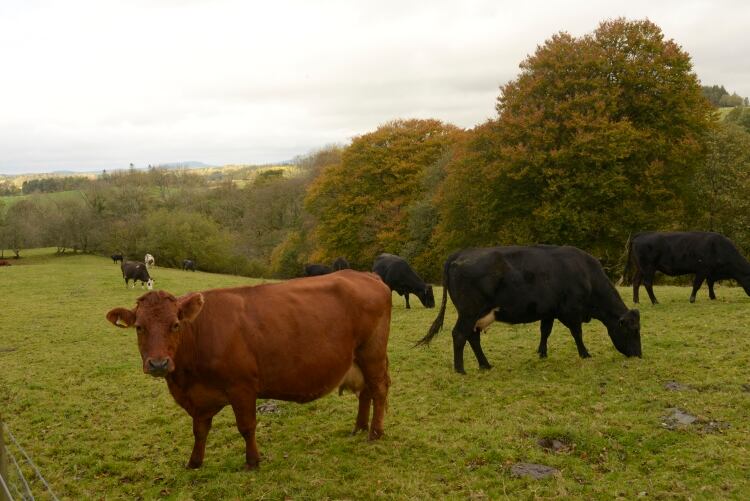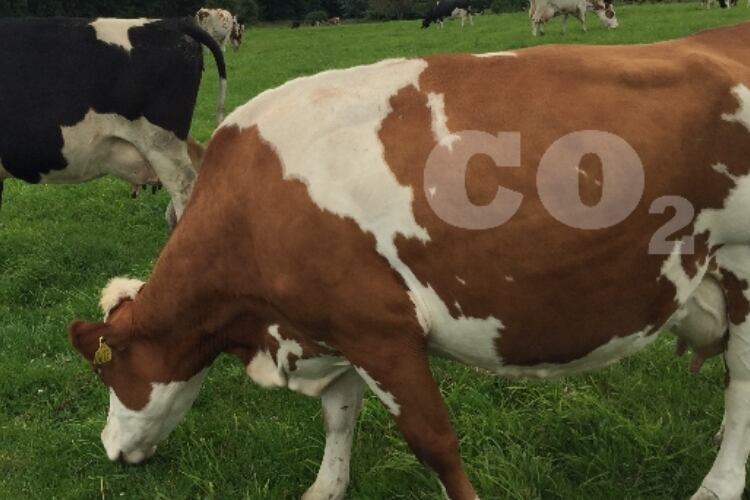The study calculated GHG emissions from the dairy sector over a ten-year period (2005-2015) and reports intensity reductions in all regions of the world based on a calculation it calls emissions intensity, which measures emissions per unit of product.
However, overall, absolute emissions rose by 18% globally due to increased global output, leading to the non-profit organization Institute for Agriculture and Trade Policy (IATP) saying the report ‘whitewashes industry's climate change contributions.’
Decrease in intensity
The report says that, on average, greenhouse gas (GHG) emitted in the production of milk has decreased in ‘emissions intensity’ by 11% from 2.8 to 2.5kg CO2 equivalents per kg of product produced.
It added that without the efficiency improvements made by the sector, total emissions from dairy would have increased by almost 38%.
The largest reductions in emission intensity occurred in low and-middle-income countries with traditionally low productivity. While developed dairy regions also reduced the intensity of emissions, the FAO noted that the percentage improvement was not as substantial as these systems were already operating at much lower rates.
The report also details where opportunities (current knowledge and potential breakthrough technologies), exist for the sector to pursue, noting the limitations associated with operating in biological systems.
Balance economy and environment
The report says that with 363m dairy cows on 133m dairy farms around the world, supporting the livelihoods of 1bn people, the importance of dairying to socio-economic and nutritional outcomes must be balanced against the need for improved environmental outcomes.
Carolyn Opio, with FAO’s Animal Production and Health Division and lead author of the report said the analysis quantifies the progress of the sector in improving the efficiency of production.
“The report also recognizes there is more for the sector to do to play their part in mitigating climate change,” Opio said.
“We encourage the dairy sector to build on the progress to date to identify and implement appropriate and sustainable solutions that provide nutritious food for the growing world population.”
Donald Moore, executive director of the Global Dairy Platform and chairman of the Dairy Sustainability Framework who commissioned the study, said, “Analysis from independent authorities such as the UN FAO, provide important guidance for the sector in its efforts to responsibly produce high quality nutrition in ways that respect the environment, the farmers that produce it and the animals it comes from.
“The dairy sector recognizes the responsibility it has to continuously improve its performance. We are on the right track, but there is still more to do and the importance of timely, quality data to help track and manage performance cannot be under estimated.”
Fritz Schneider, chair of the Global Agenda for Sustainable Livestock (GASL) said the report shows production systems with a low or medium production have an enormous potential to reduce emissions by sustainable intensification.
Reacting to the report, European Dairy Association (EDA) secretary general Alexander Anton tweeted, “#Milk and #dairy have an unrivalled micro and macro-nutritional value with low environmental impact: #milkisperfection!”
IATP unimpressed
However, the IATP disagrees, and says the environmental impact is far from low. It says the report largely ignores the role of global dairy corporations in driving up GHG emissions and, instead, places the burden of emissions reductions on poor farmers in the Global South.
"By letting the big dairy companies off the hook, the FAO actually accepts the large-scale expansion in production the industry has planned," Shefali Sharma, director of IATP Europe, said.
"The IPCC gives us 12 years to get on a path that will limit global warming below 1.5°C. The path described in the new report will, instead, lead to far greater global emissions from the dairy sector."
The IATP said the report applauds the dairy industry for reducing its emissions intensity by 11% from 2005-2015, but those reductions are outweighed by the increase in overall production. This expansion has largely been through new mega-dairies, which often cause greater environmental damage, at the expense of small to mid-sized dairy farmers, the organization said.
IATP and GRAIN, a small international non-profit organization that works to support small farmers, said they used the same FAO GLEAM methodology in their 2018 report Emissions Impossible, which says a focus on emissions intensity misses the larger picture, letting meat and dairy corporations off the hook for reducing overall emissions.
Sharma added, “To say that emissions reductions will now come from small-scale farmers that produce little and contribute even less to the climate crisis is unacceptable from both an ecological and social perspective.
"The European Union, United States and New Zealand account for 46% of all global dairy production. We need to focus on the global dairy giants headquartered in these regions that are responsible for proliferating a flawed model of mass production and consumption."
18% still a big number
Sharma told DairyReporter, “What this report shows me is that in 10 years dairy production has increased when all the climate scientists are saying we've really got to cut back. The IPCC (Intergovernmental Panel on Climate Change) says we have 12 years within which to get on a path to limit global warming to 1.5 degrees Celsius.
That means in the next 12 years we have to dramatically change the way we live. That's not everybody, it's those of us in over-producing and over consuming countries when it comes to meat and dairy.”
Sharma said while the report praises 18% emissions growth as opposed to 38% without the measures being taken, “If you think about it, 18% emissions growth in 10 years for one sector, if we continue this way, there's no way we can limit global warming to 1.5 degrees.”
Emissions in the report are reported as CO equivalent emissions, based on 100-year Global Warming Potential (GWP100) conversion factors.
However, Sharma argues a 20 year time horizon would have been more pertinent.
The US Environmental Protection Agency notes that, "For example, for CH4 (methane), which has a short lifetime, the 100-year Global Warming Potential (GWP) of 28–36 is much less than the 20-year GWP of 84–87."
Sharma said the various climatic tipping points are not going to be calculated based on a 100 year time horizon; what matters is how much warming happens in the next few decades.
“So whatever estimates they have in the report – that emissions increased by 18% between 2005-2015, they are basing on a 100 year time horizon.
“So, the question to ask the FAO is, so what does that percent increase look like if they based their estimates on a 20-year time horizon?”
She also pointed to the recent EAT-Lancet Commission report, which noted that by 2050 there should be a reduction of anywhere between 50 to 80% of dairy intake.
“While the dairy industry is increasing, we've got the EAT-Lancet Commission saying we should be going in the opposite direction.”


